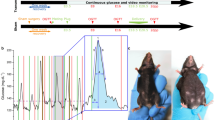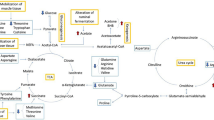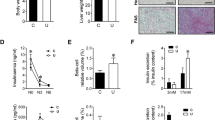Abstract
SHEEP are prone to a severe hypoglycæmia and ketosis during twin-pregnancy1. Since very little glucose is absorbed from the ruminant digestive tract2 and since hexose concentrations and requirements of the sheep fœtus seem to be high3, it has often been inferred that pregnant sheep are normally in a precarious state of glucose balance. Until recently, however, few quantitative data have been available on glucose metabolism in pregnant sheep.
Similar content being viewed by others
Article PDF
References
Reid, R. L., Austral. J. Agric. Res., 11, 346 (1960).
Lindsay, D. B., Vet. Rev. Annot., 5, 103 (1959).
Huggett, A. St. G., Brit. Med. Bull., 17, 122 (1961).
Annison, E. F., and White, R. R., Biochem. J., 80, 162 (1961).
Bergman, E. N., Amer. J. Physiol., 204, 147 (1963).
Ford, E. J. H., Biochem. J., 88, 427 (1963).
Steele, R., Wall, J. L., de Bodo, R. C., and Altszuler, N., Amer. J. Physiol., 187, 15 (1956).
Reid, R. L., and Hinks, N. T., Austral. J. Agric. Res., 13, 1092 (1962).
Author information
Authors and Affiliations
Rights and permissions
About this article
Cite this article
BERGMAN, E. Glucose Turnover Rates in Pregnant and Non-pregnant Sheep. Nature 202, 1333 (1964). https://doi.org/10.1038/2021333a0
Issue date:
DOI: https://doi.org/10.1038/2021333a0



